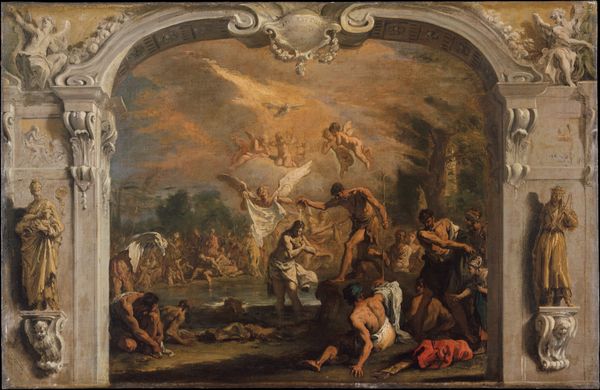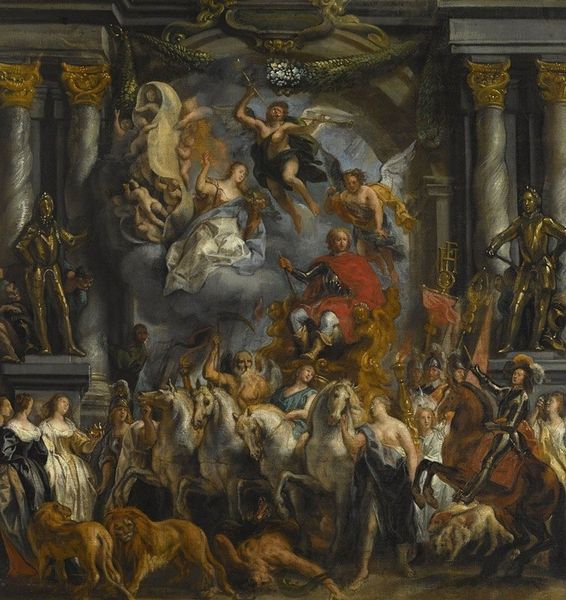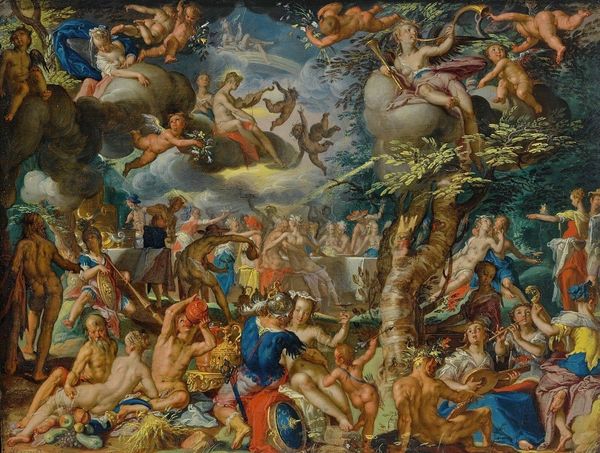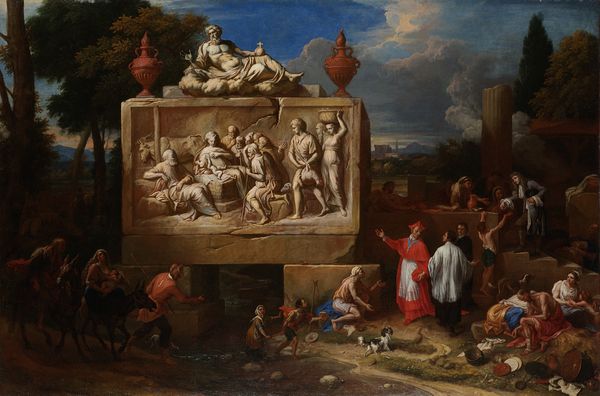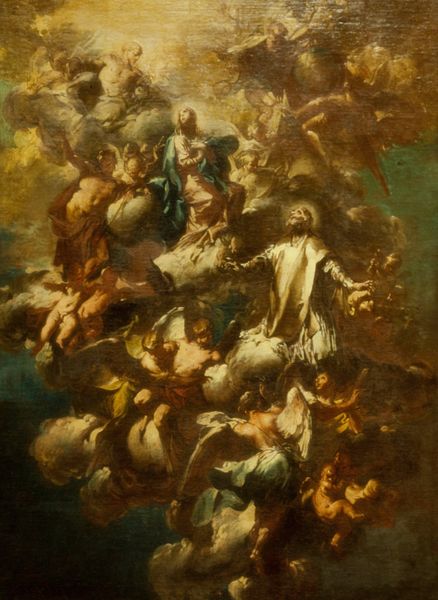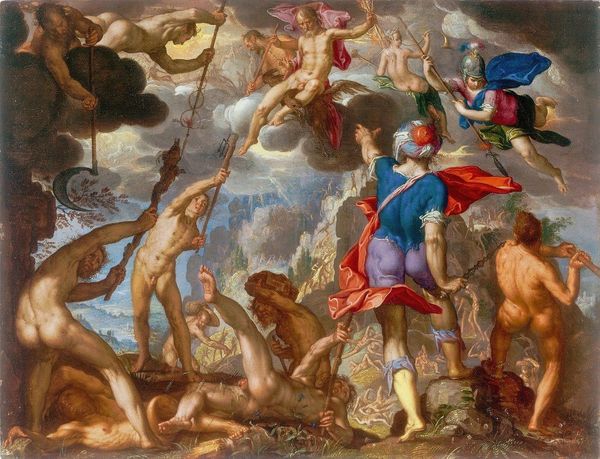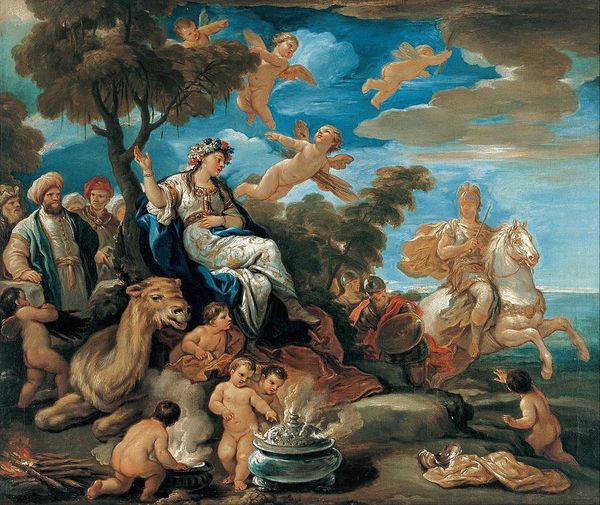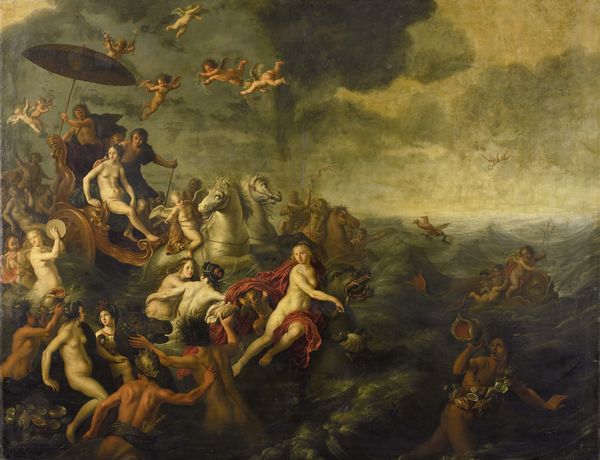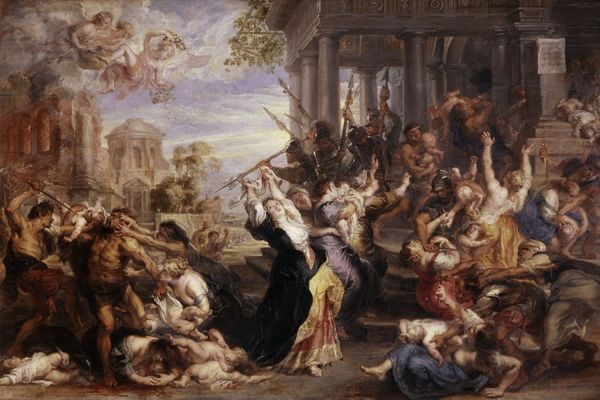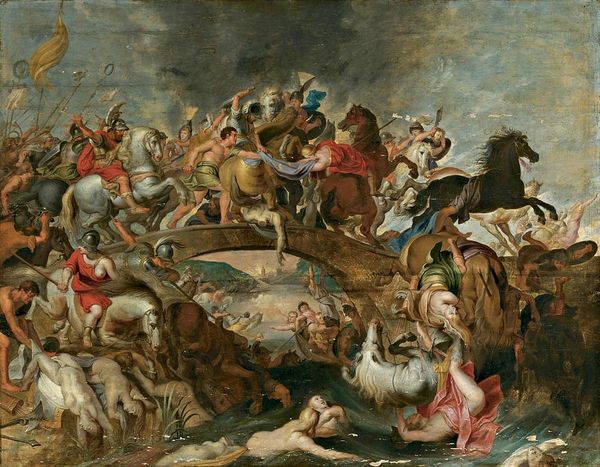
drawing, painting, oil-paint
#
drawing
#
narrative-art
#
painting
#
oil-paint
#
figuration
#
oil painting
#
history-painting
#
academic-art
#
italian-renaissance
Dimensions: sheet: 94.5 × 78 cm (37 3/16 × 30 11/16 in.) framed: 106.5 × 86.5 × 5.5 cm (41 15/16 × 34 1/16 × 2 3/16 in.)
Copyright: National Gallery of Art: CC0 1.0
Curator: This painting is Aurelio Lomi’s "The Stoning of Saint Stephen," created around 1602 using oil paint. What are your first impressions? Editor: A flurry of enraged bodies! Like a swarm of bees turned murderous. The light and color amplify that frenzied chaos—it’s less witnessing a martyrdom and more being swept into a riot. Curator: Indeed. Lomi’s handling of the crowd dynamic is key. Note the interplay of limbs and torsos; the convergence of lines directs our focus to the lower right quadrant, emphasizing Stephen's martyrdom, thus structuring the composition in two parts. A very clear separation from heaven. Editor: Exactly. Visually, the chaos below is literally contrasted with celestial order above. The divine realm feels serene, almost aloof to the brutal reality beneath them. Maybe that aloofness heightens the horror down below? I feel so alone looking at that lower section of the work, abandoned in the most horrific of times. Curator: One could certainly interpret it as a deliberate commentary on divine intervention, or perhaps the lack thereof. However, structurally, this could be seen as Lomi embracing counter-reformation ideals by reinforcing hierarchy within painting, re-emphasizing clarity to impart religious message. Editor: It is striking. Beyond the strict structural read, Lomi really nailed the emotional landscape—the painting isn't just illustrating a scene; it's thrusting you into the thick of human drama. Is this perhaps why we cannot stop ourselves looking? The raw horror reels us in for some inexplicable reason. Curator: I appreciate the connection. Although Lomi's brushwork adheres to Academic norms, with carefully rendered figures and classical motifs, "The Stoning of Saint Stephen," nevertheless, uses both formalist and artful nuance. Editor: Which I suppose brings it into conversation with the larger question. Perhaps horror and the sublime aren't polar opposites, perhaps they can dance in the same work? This work, for me, finds beauty in both places and I think I can carry that knowledge with me after today. Curator: A stimulating final reflection! Thank you for joining me to dissect Lomi’s masterwork.
Comments
No comments
Be the first to comment and join the conversation on the ultimate creative platform.
